Give Feedback
Give Feedback Option
Hello! Please take a screenshot and email it to educationsimplify@gmail.com.
Email screenshot to: hellofromeducatesimplify@gmail.com
About this course:
Note: Please check your email (spam or promotions folder) after purchasing this bundle to get your 30% discount code for Face to Face classes
This package includes:
Behavioral or Psych CEU
IV Therapy & Blood Withdrawal
Hospital Fire Safety
ECG Pharmacology
Face-to-Face Classes + Gold & Premium Packages
- PALS
- IV THERAPY
- ECG
- BLS
- HOSPITAL FIRE SAFETY
- ACLS
- IV THERAPY
- ECG
- PALS
- BLS
Plus EXTRAS!
Price: $334.00
Includes:
IV Therapy & Blood Withdrawal Theory Part 1 (for All Participants)
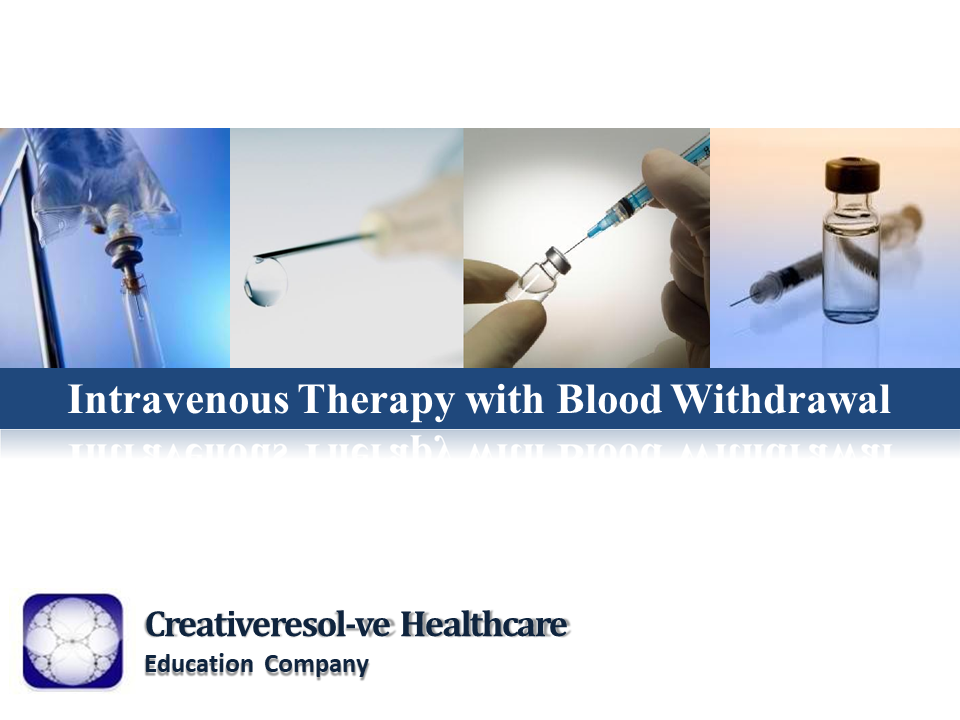
Refresh your IV Insertion Skills with this module. Complete half of your CEU hours @ home and come in for skills. This self-study module is designed as the online theory segment of IV Therapy and Blood Withdrawal of Educate Simplify’s full 3-day course.
For RNs & Rad Techs — feel free to complete this online segment and come into our Los Angeles Training Center for a weekend skills session.
Total CEU hours:RNs = online certificate + skills = 30 hoursRadiology Technologists = online certificate + skills = 24 A+
This course has been certified by or provided by the following Certified Organization/s:American Nurses Credentialing Center (ANCC)34.00 Hours – Reference: ANCC#56-16California Board of Registered Nursing (CBRN)12.00 Hours – Reference: CEP# 15273Florida Board of Nursing12.00 Hours – Exam Pass Rate: 70 -Reference: 20-428685American Registry of Radiologic Technologist, Recognized Continuing Education Evaluation Mechanism (ARRT RCEEM)24.00 Credits – Exam Attempts: 3 – Exam Pass Rate: 75California Board of Vocational Nursing36.00 Hours – Reference: 1B-2497
View More
This course has been certified by or provided by the following Certified Organization/s:
American Nurses Credentialing Center (ANCC)
34.00 Hours – Reference: ANCC#56-16
California Board of Registered Nursing (CBRN)
12.00 Hours – Reference: CEP# 15273
Florida Board of Nursing
12.00 Hours – Exam Pass Rate: 70 -Reference: 20-428685
American Registry of Radiologic Technologist, Recognized Continuing Education Evaluation Mechanism (ARRT RCEEM)
24.00 Credits – Exam Attempts: 3 – Exam Pass Rate: 75
California Board of Vocational Nursing
36.00 Hours – Reference: 1B-2497
Management of Assaultive Behavior (MAB) AB 508 Workplace Violence Prevention Certification Program
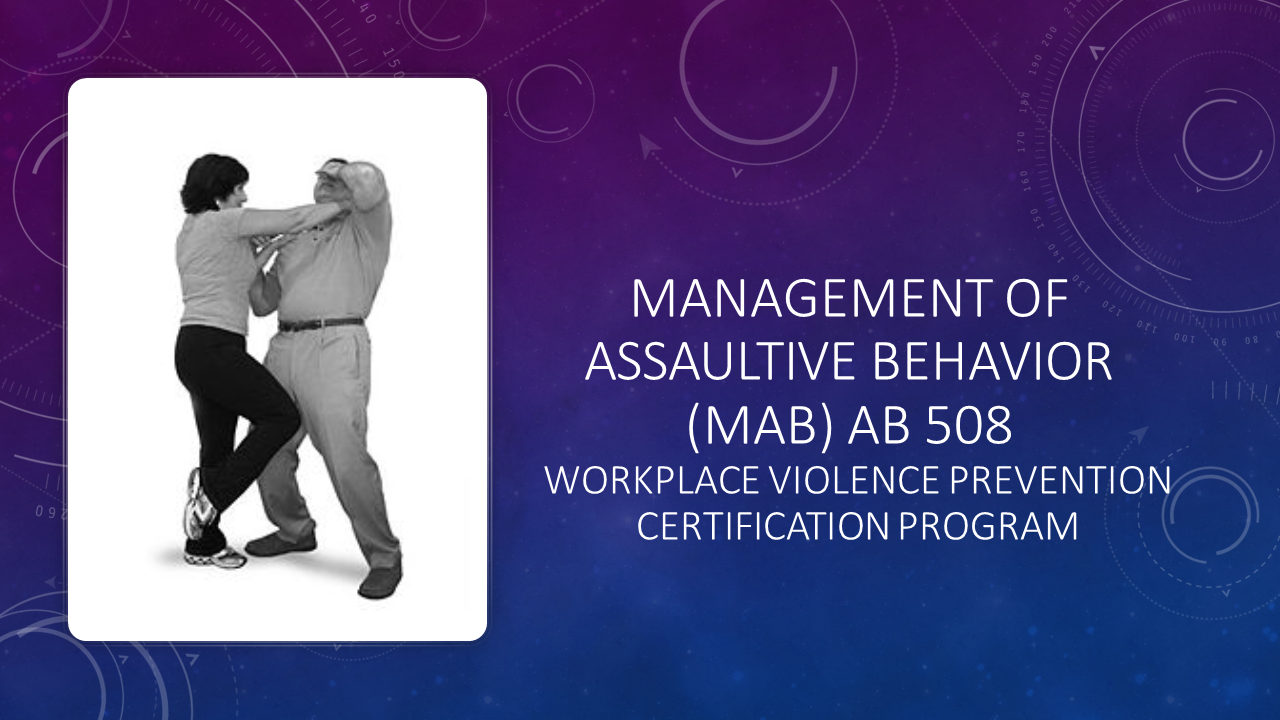
***IMPORTANT for Face-to-Face Skills***
1) Please bring in you Certificate of Completion
2) Videos are MANDATORY--See Study Guide for Videos
New topic added: Surviving an Active Shooter in Healthcare
This course was designed in compliance with OSHA, SB 1299 and AB 508. Completing this course will grant the student up to four (4) Continuing Education Units (CEUs) through the California Board of Registered Nursing (CE Provider Number 17260).
Course Objectives
- To get AB 508 certified so you can get back to work and to get out early.
- Safety for You, for the individual who is escalated along with anyone else in the area who may be in jeopardy.
- Working together as a team, even ahead of time, to ensure the best possible outcome when dealing with potential violence.
- Recognizing potential problems ahead of time so that you can initiate the most therapeutic effective interventions.
- Understanding why individuals become aggressive and what roles we the staff play in either de-escalating or provoking the behavior.
- To learn how to DE-ESCALATE an upset or escalating individual or situation before it becomes violent.
- To know when to remove yourself from the situation or area so the appropriate people can intervene.
- Learn ways to protect yourself when an individual becomes aggressive as well as the legalities and liabilities of defending yourself.
We’ve worked SO HARD to produce videos for you to become a better Healthcare Worker! Please Like our Channel "Educate Simplify Productions" & Subscribe! :)
View More
We’ve worked SO HARD to produce videos for you to become a better Healthcare Worker! Please Like our Channel "Educate Simplify Productions" & Subscribe! :)
What is Addiction?
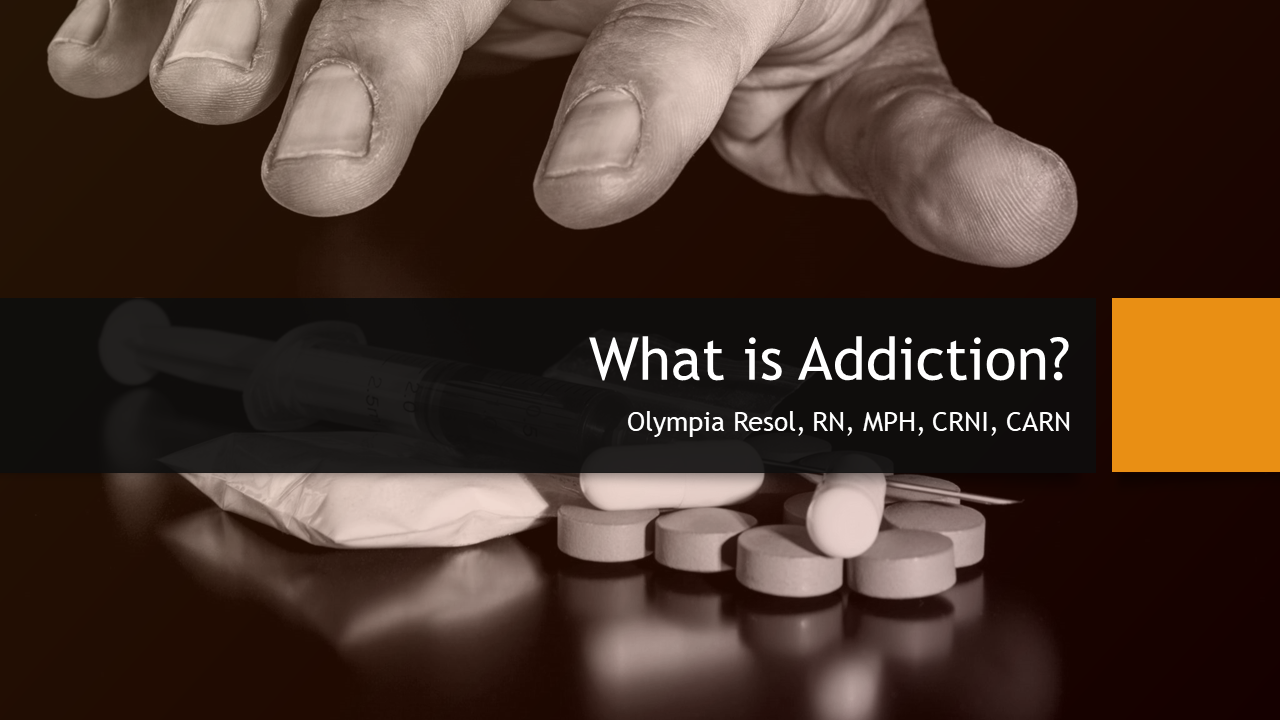
ONE survey question ONLY @ the end
Course OverviewOur Epidemiology, Causes and Risk Factors of Addiction course discusses diagnosing substance use disorders.It offers a brief overview of medications used to counteract the effects of withdrawal. It also provides a detailed look on the medications used to treat opioid, alcohol and tobacco use disorders.
View More
ONE survey question ONLY @ the end
Course Overview
Our Epidemiology, Causes and Risk Factors of Addiction course discusses diagnosing substance use disorders.
It offers a brief overview of medications used to counteract the effects of withdrawal. It also provides a detailed look on the medications used to treat opioid, alcohol and tobacco use disorders.
Substance Use Disorder in Nurses
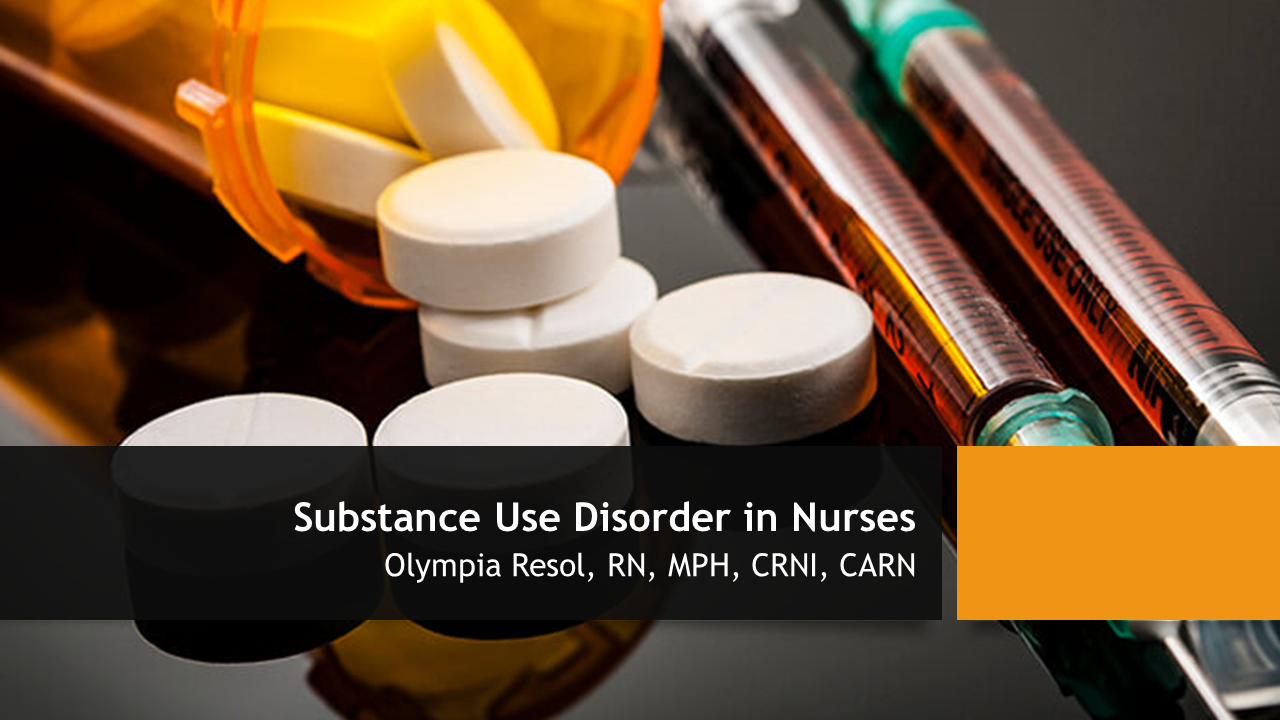
ONE survey question ONLY @ the end
The Diagnostic and Statistical Manual of Mental Disorders (DSM-5) defines substance use disorder as “a cluster of cognitive, behavioral, and physiological symptoms indicating that the individual continues using the substance despite significant substance-related problems” (American Psychiatric Association, 2013). The DSM-5 identifies four groupings of criteria that are characteristic of the disorder (American Psychiatric Association, 2013).
View More
The Diagnostic and Statistical Manual of Mental Disorders (DSM-5) defines substance use disorder as “a cluster of cognitive, behavioral, and physiological symptoms indicating that the individual continues using the substance despite significant substance-related problems” (American Psychiatric Association, 2013). The DSM-5 identifies four groupings of criteria that are characteristic of the disorder (American Psychiatric Association, 2013).
Opioids-Improving and Promoting Safe Prescription
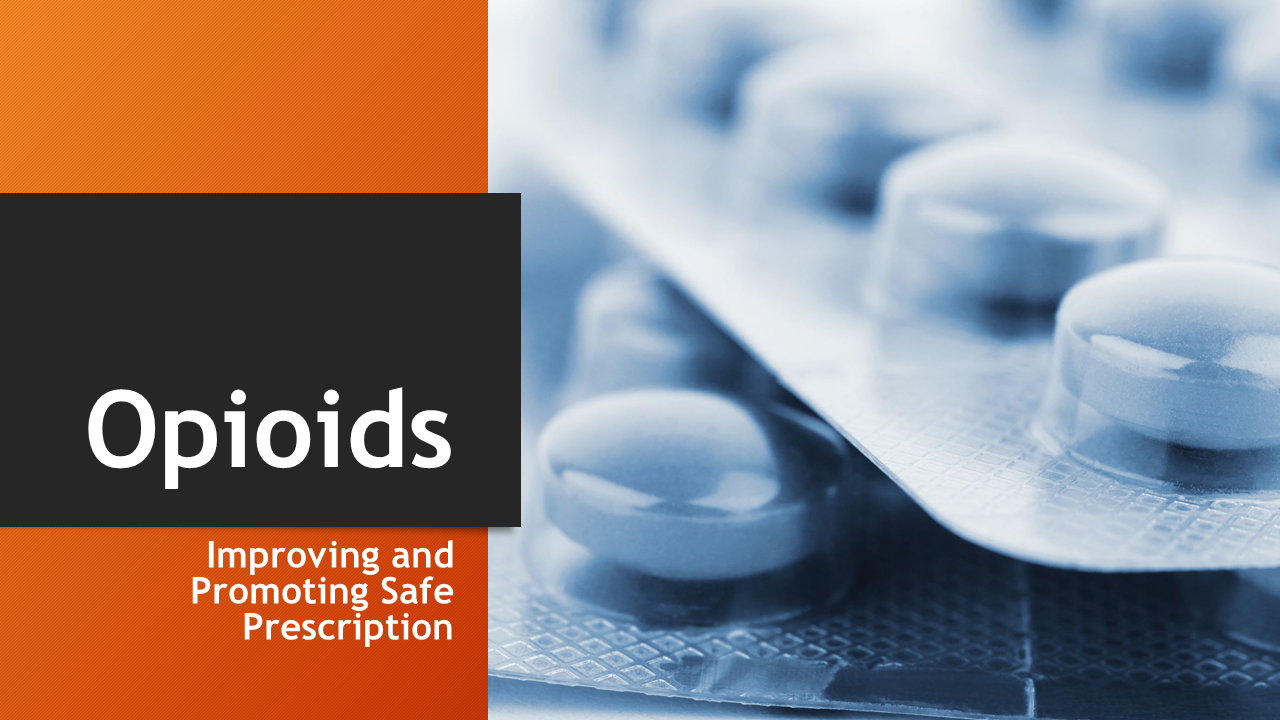
ONE survey question ONLY @ the end
Opioids are a class of drugs that include the illegal drug heroin, synthetic opioids such as fentanyl, and pain relievers available legally by prescription, such as oxycodone (OxyContin®), hydrocodone (Vicodin®), codeine, morphine, to mention a few.
View More
ONE survey question ONLY @ the end
Opioids are a class of drugs that include the illegal drug heroin, synthetic opioids such as fentanyl, and pain relievers available legally by prescription, such as oxycodone (OxyContin®), hydrocodone (Vicodin®), codeine, morphine, to mention a few.
Naloxone: The Opioid Reversal Drug that Saves Lives
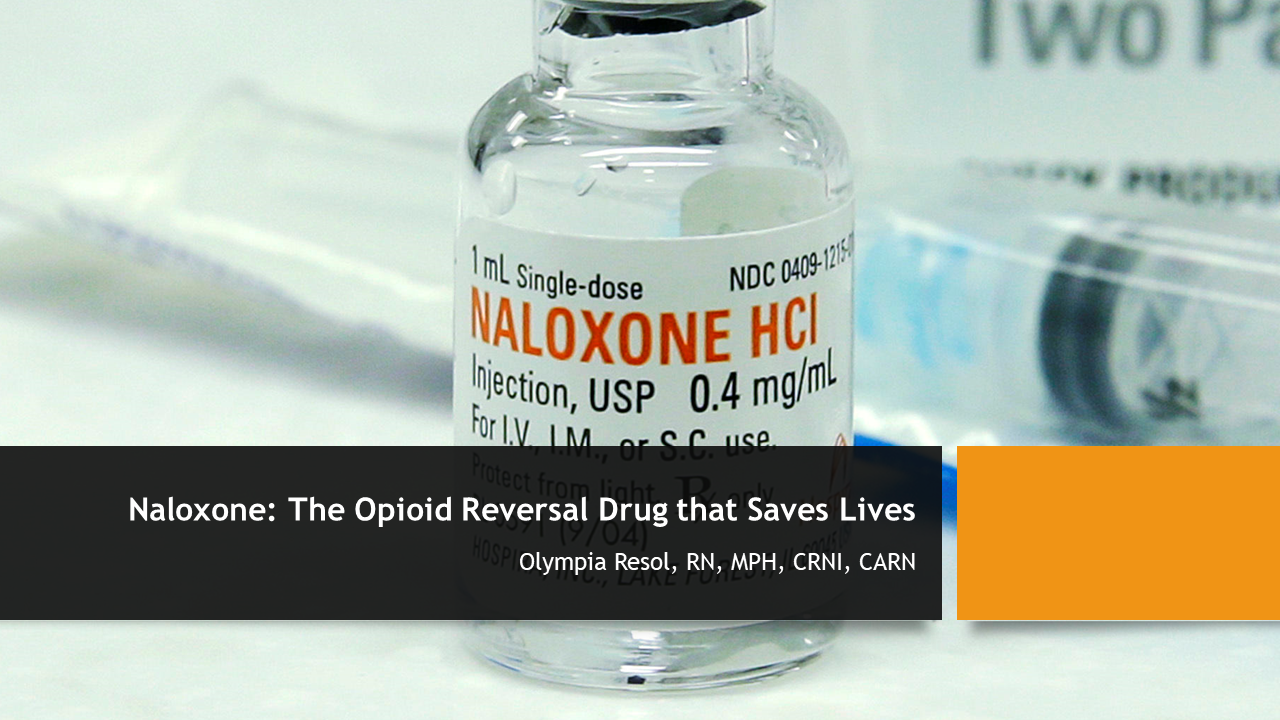
ONE survey question ONLY @ the end
Objectives:Discuss the risk-benefit relationship related to the use of opioids to treat chronic pain;Compare the potency of fentanyl relative to heroin;State the most common reason cited for mis-using prescription opioid products;Characterize the key sign of opioid overdose;State the main safety concern associated with the use of naloxone as an antidote for opioid overdose;Name one positive outcome conclusively associated with increasing the availability of naloxone.
View More
ONE survey question ONLY @ the end
Objectives:
Discuss the risk-benefit relationship related to the use of opioids to treat chronic pain;
Compare the potency of fentanyl relative to heroin;
State the most common reason cited for mis-using prescription opioid products;
Characterize the key sign of opioid overdose;
State the main safety concern associated with the use of naloxone as an antidote for opioid overdose;
Name one positive outcome conclusively associated with increasing the availability of naloxone.
Opioid Use & Chronic Pain
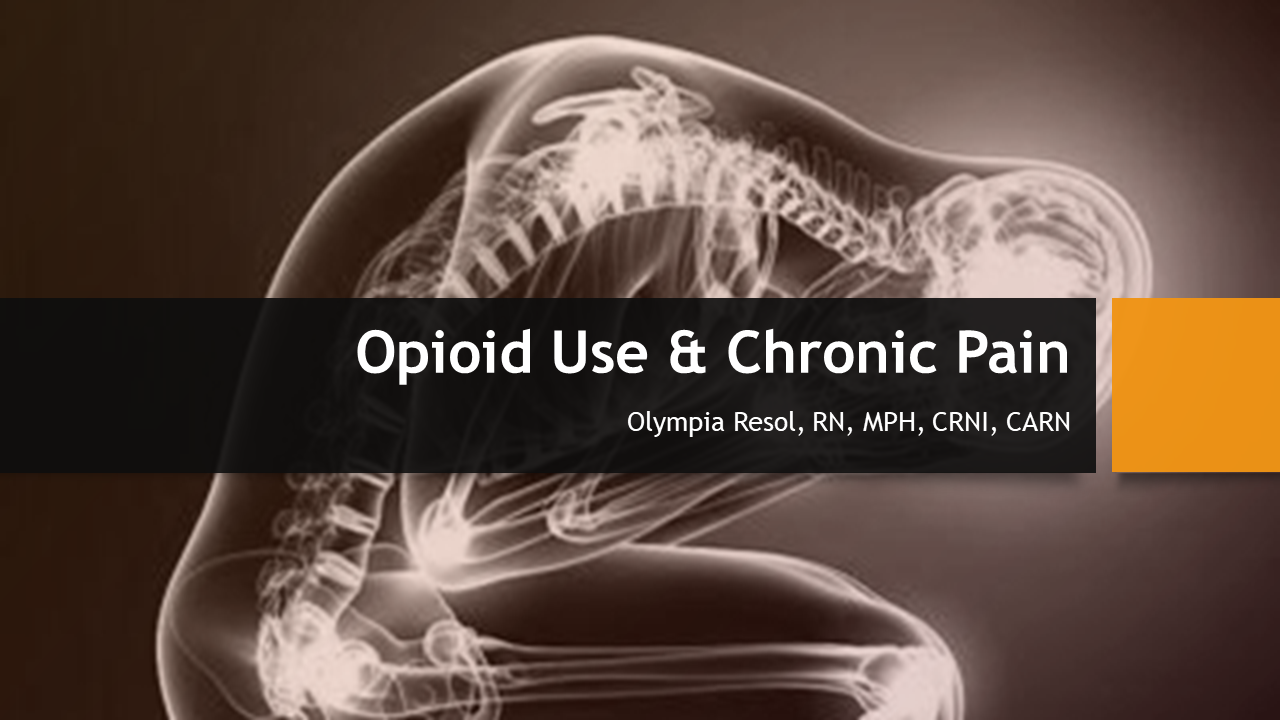
ONE survey question ONLY @ the end
IntroductionHistorically, prescribers limited the use of opioids for pain management solely to patients with acute or cancer-related pain. Over time, the use of opioids to treat many types of pain has increased to dangerously high levels (Berland, 2012). This shift does not come without controversy, as considerable debate continues regarding the appropriate use of these potent, and potentially addictive medications (Ault, 2015). The increase in opioid prescribing is staggering: In 1991, approximately 76 million opioid prescriptions were written in the United States, and by 2013 this figure jumped to nearly 207 million. The United States is the world’s largest consumer of these medications, cornering nearly 100% of the global hydrocodone demand, and 81% of the demand for oxycodone (NIH, 2014). Of the estimated 24.6 million U.S. citizens (i.e., 9.4% of the population 12 and older) suffering from substance abuse, approximately 1.9 million people abuse or are dependent on prescription opioid drugs. Addiction occurs in every state, county, socio-economic, and ethnic group (ASAMOAD, 2016). Due to this surge in the use of prescription narcotics, 53 people in the U.S. die each day of a prescription opioid overdose (CDC, 2018).
View More
ONE survey question ONLY @ the end
Introduction
Historically, prescribers limited the use of opioids for pain management solely to patients with acute or cancer-related pain. Over time, the use of opioids to treat many types of pain has increased to dangerously high levels (Berland, 2012). This shift does not come without controversy, as considerable debate continues regarding the appropriate use of these potent, and potentially addictive medications (Ault, 2015). The increase in opioid prescribing is staggering: In 1991, approximately 76 million opioid prescriptions were written in the United States, and by 2013 this figure jumped to nearly 207 million. The United States is the world’s largest consumer of these medications, cornering nearly 100% of the global hydrocodone demand, and 81% of the demand for oxycodone (NIH, 2014).
Of the estimated 24.6 million U.S. citizens (i.e., 9.4% of the population 12 and older) suffering from substance abuse, approximately 1.9 million people abuse or are dependent on prescription opioid drugs. Addiction occurs in every state, county, socio-economic, and ethnic group (ASAMOAD, 2016). Due to this surge in the use of prescription narcotics, 53 people in the U.S. die each day of a prescription opioid overdose (CDC, 2018).
Assessing and Preventing Suicide
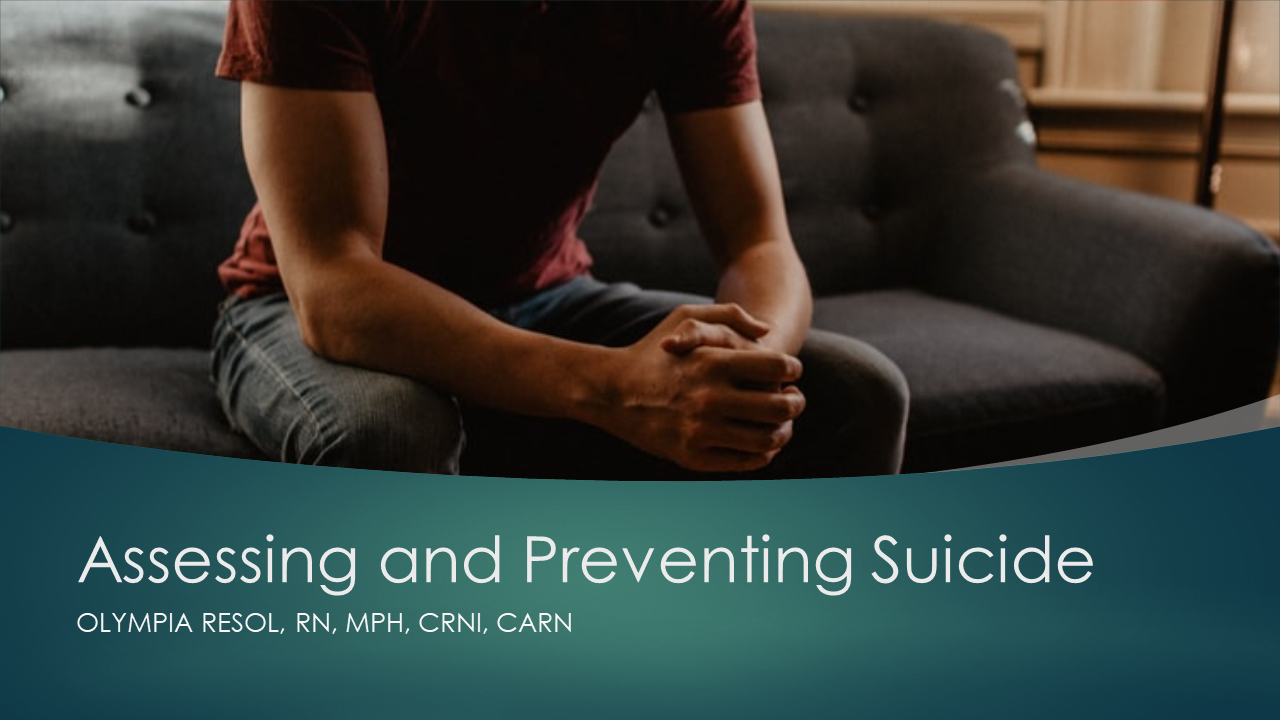
ONE survey question ONLY @ the end
Our Assessing and Preventing Suicide course is intended for healthcare professionals who deal with at-risk individuals and those with history of suicide attempt/s.
View More
Mental Health Emergencies
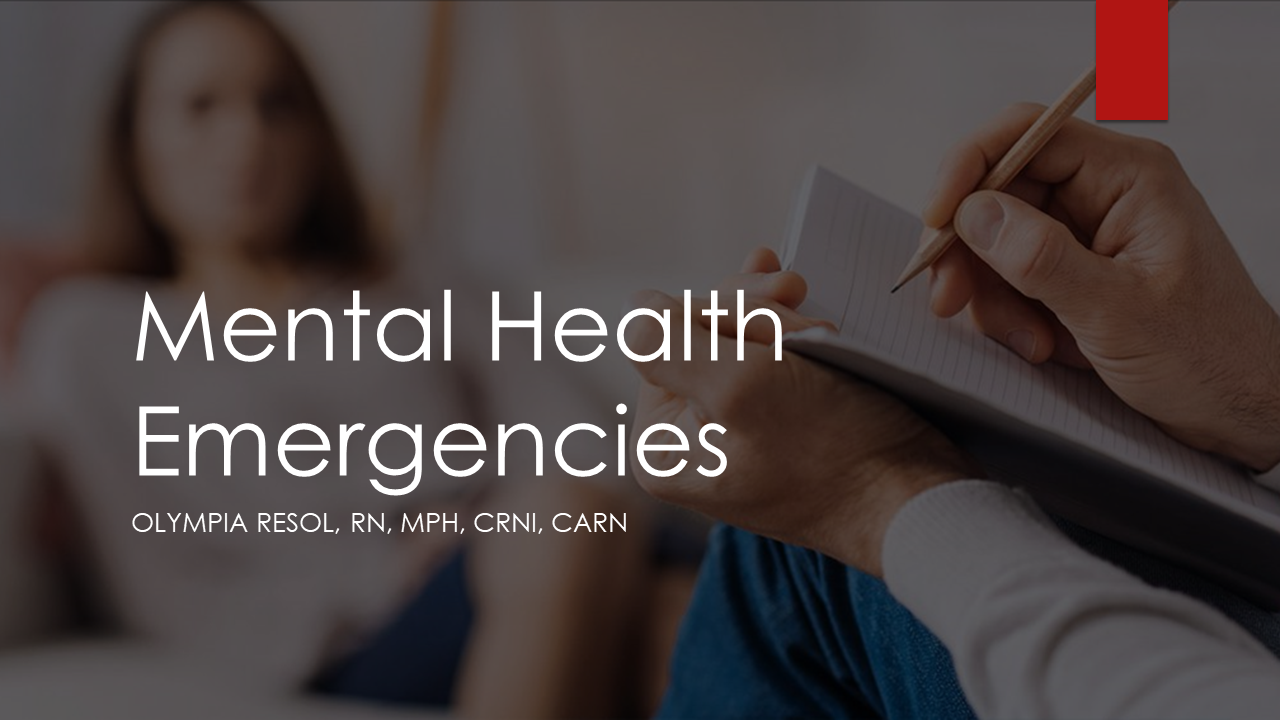
ONE survey question ONLY @ the end
Our Mental Health Emergencies course aims to teach students various neurological and mental health emergencies and what to do when they occur.
View More
Identifying & Reporting Child Abuse
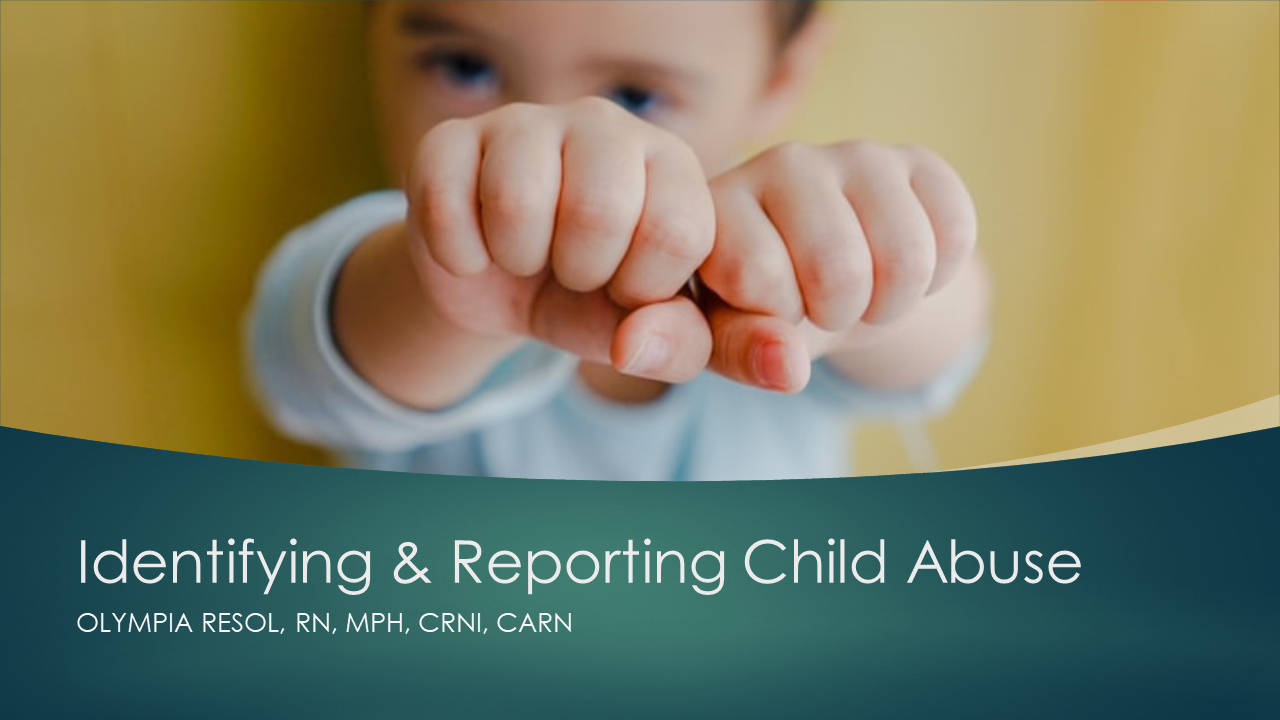
ONE survey question ONLY @ the end
Identifying & Reporting Child Abuse aims to teach students how to effectively assess, identify, intervene and report cases of child abuse.
View More
How to Respond to an Assault
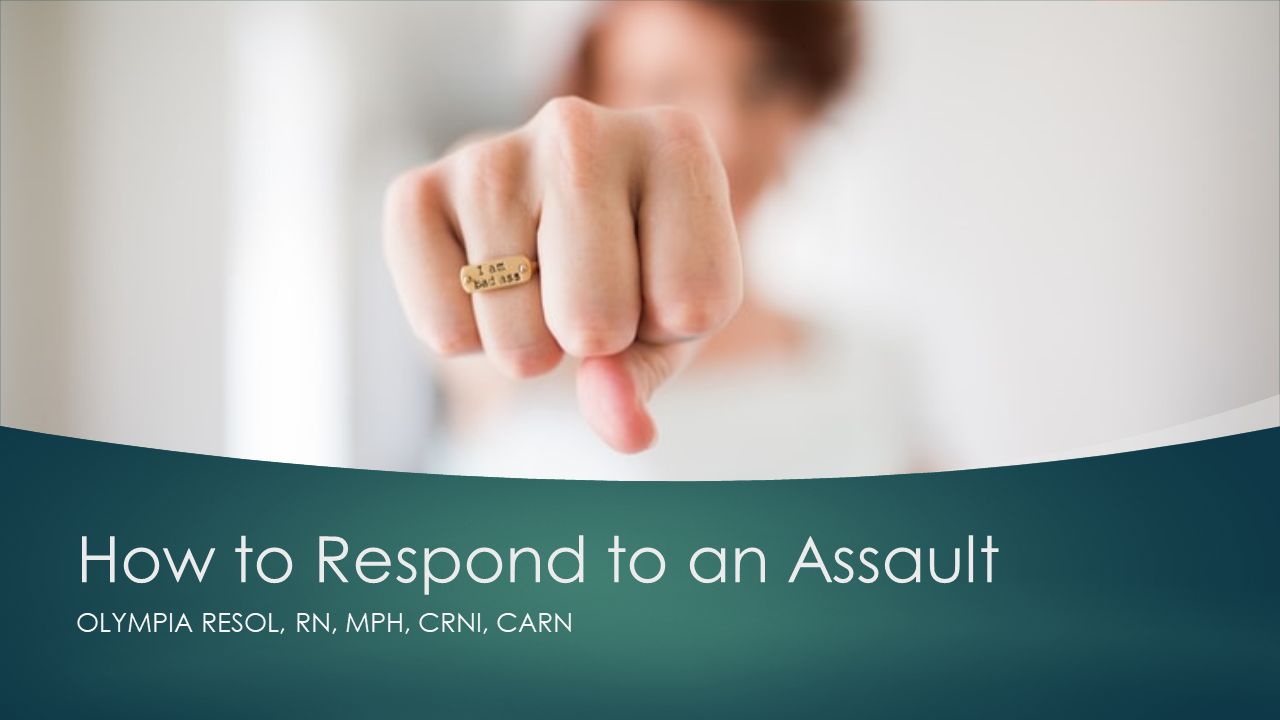
ONE survey question ONLY @ the end
Our How to Respond to an Assault course seeks to equip our students with the essential skills to utilize during an assault.
View More
Sexual Harassment in the Workplace
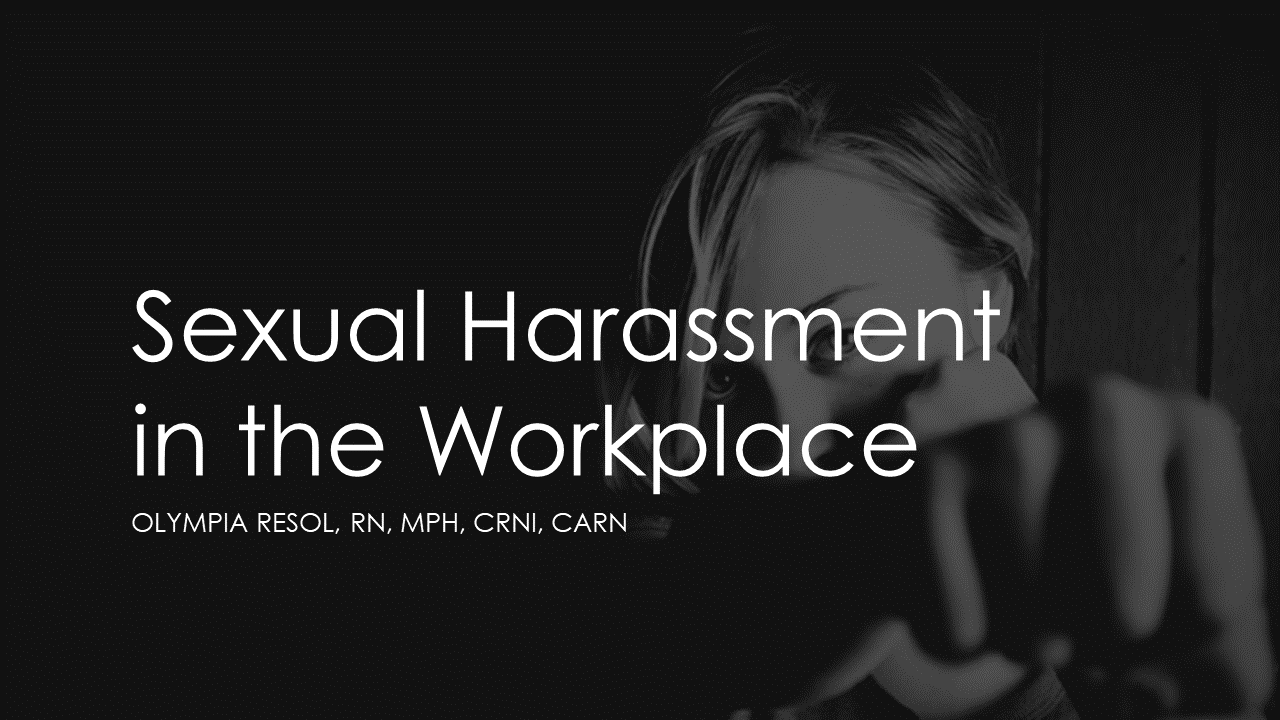
ONE survey question ONLY @ the end
Our Sexual Harassment in the Workplace course aims to define, explain the impact, demonstrate how to report, intervene and prevent sexual harassment in the workplace.
View More
How to Deal with Patients with Mental Disorders
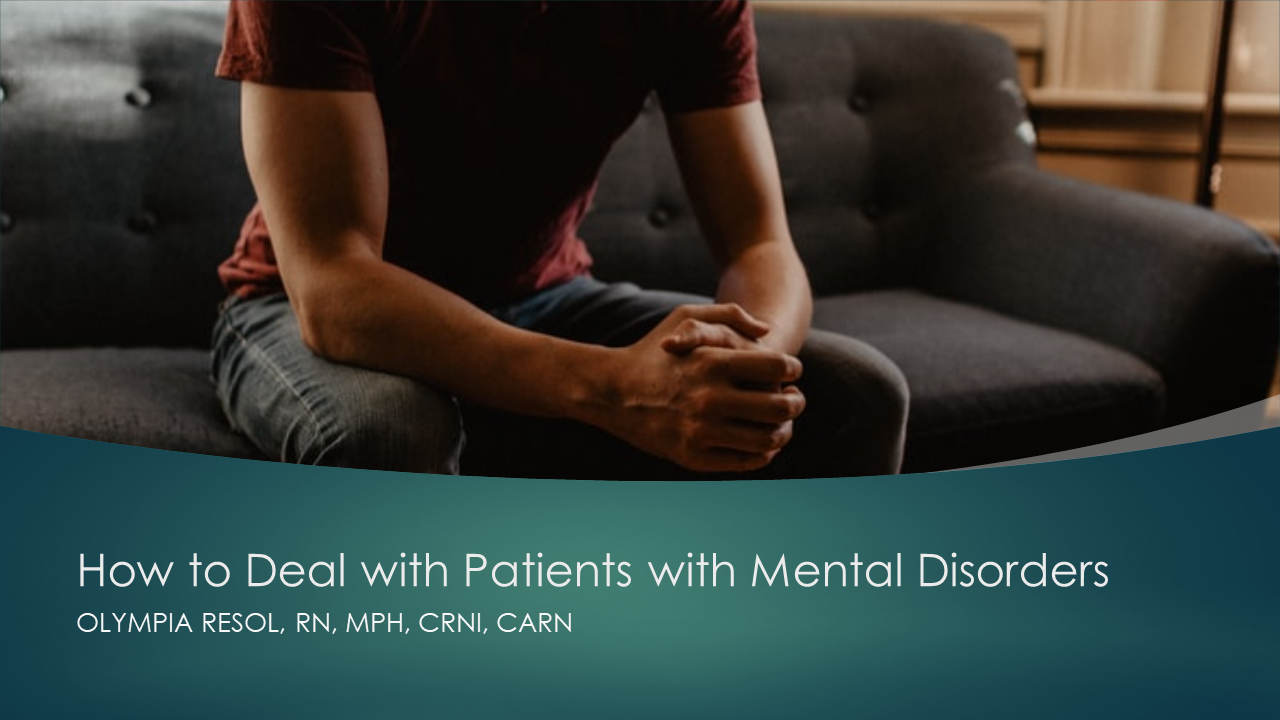
ONE survey question ONLY @ the end
Our How to Deal with Patients with Mental Disorders aims to equip students with the skills to effectively communicate with patients with mental health disorders.
View More
Online Hospital Fire Safety
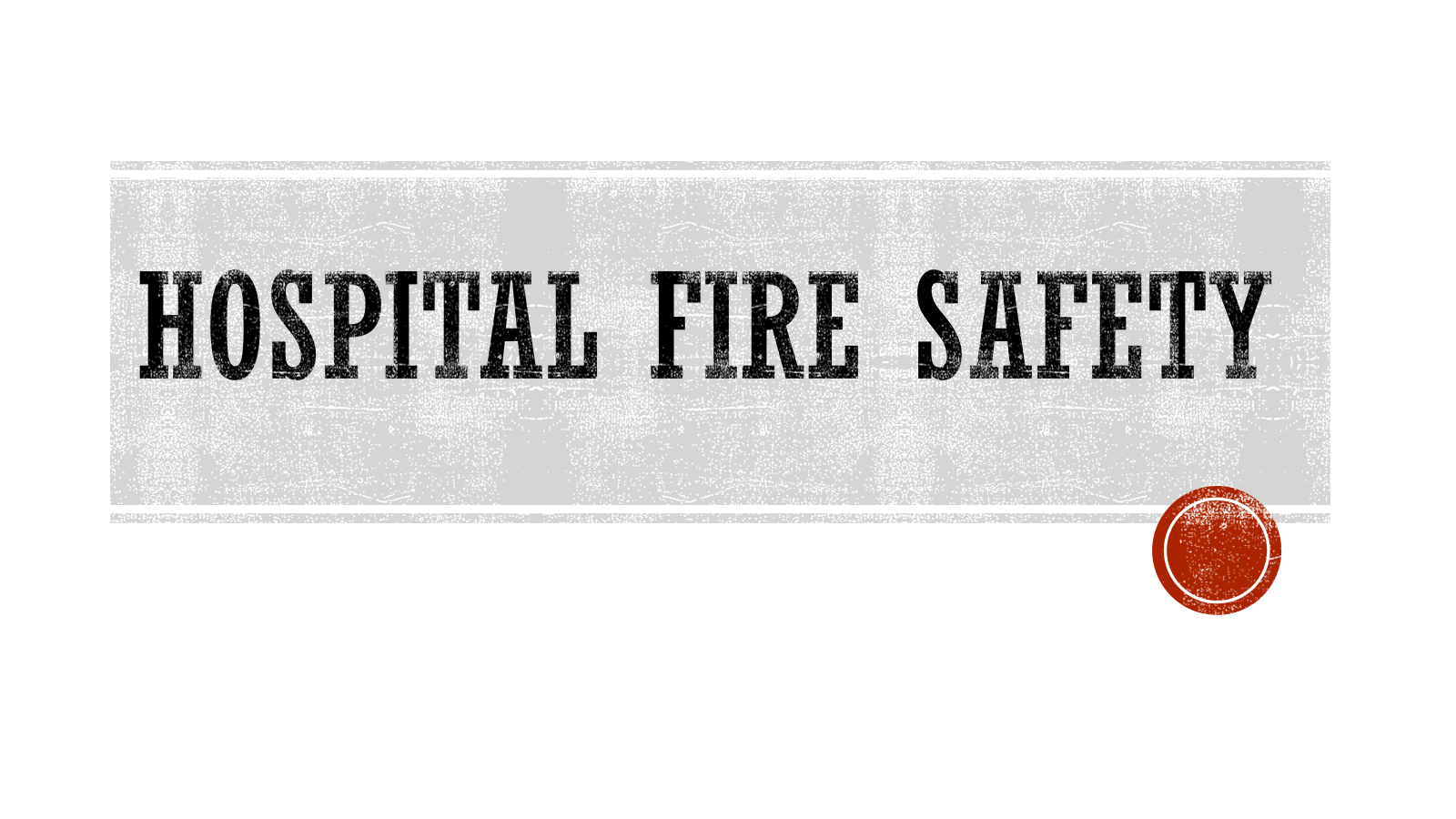
ONE survey question ONLY @ the end
Hospital Fire & Safety Course is designed for Los Angeles healthcare staff who may be confronted with an unexpected emergency involving environments found in major hospitals, skilled nursing facilities, retirement homes, etc.
View More
ECG and Pharmacology
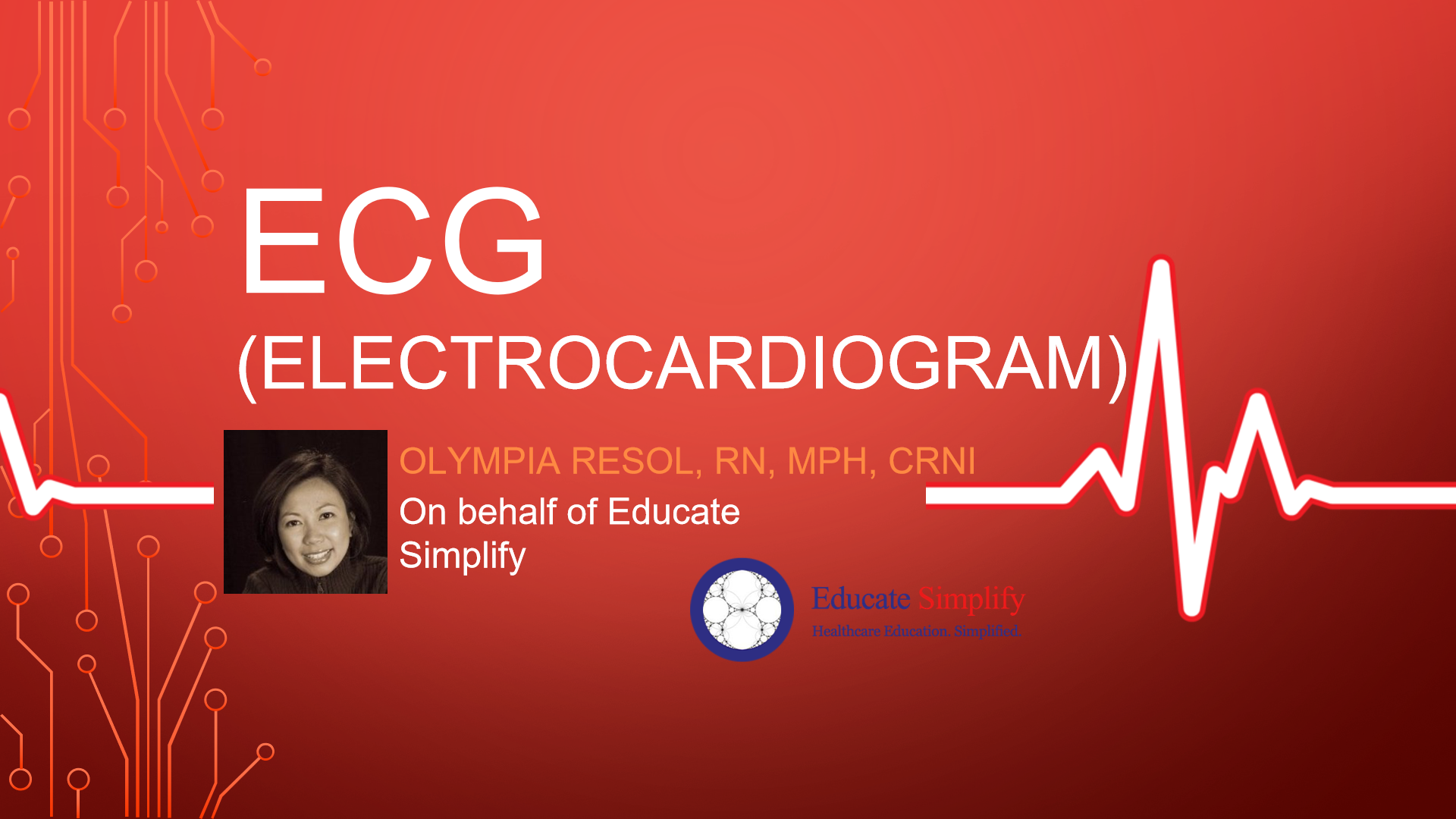
Description:ECG and Pharmacology is an ideal course for providers preparing to take ACLS, but can be taken by anyone who needs ECG recognition skills. This course will be a much thorough analysis of arrythmias beyond those covered in an ACLS course. The ECG & Pharmacology class is an 8 hour course.Objectives
To develop ECG recognition skills & drug treatment knowledgeCurrent Accreditations
This course has been certified by or provided by the following Certified Organization/s:California Board of Registered Nursing (CBRN)
8.00 Hours - Reference: 15273
Florida Board of Nursing
8.00 Hours - Exam Pass Rate: 70 - Reference: #20-428685
California Board of Vocational Nursing and Psychiatric Technicians (BVNPT)
8.00 Hours - Exam Attempts: 3 - Exam Pass Rate: 60 - Reference: BVNPT #V10750
View More
Description:
ECG and Pharmacology is an ideal course for providers preparing to take ACLS, but can be taken by anyone who needs ECG recognition skills. This course will be a much thorough analysis of arrythmias beyond those covered in an ACLS course. The ECG & Pharmacology class is an 8 hour course.
Objectives
To develop ECG recognition skills & drug treatment knowledge
To develop ECG recognition skills & drug treatment knowledge
Current Accreditations
This course has been certified by or provided by the following Certified Organization/s:
This course has been certified by or provided by the following Certified Organization/s:
California Board of Registered Nursing (CBRN)
8.00 Hours - Reference: 15273
Florida Board of Nursing
8.00 Hours - Exam Pass Rate: 70 - Reference: #20-428685
California Board of Vocational Nursing and Psychiatric Technicians (BVNPT)
8.00 Hours - Exam Attempts: 3 - Exam Pass Rate: 60 - Reference: BVNPT #V10750
8.00 Hours - Reference: 15273
Florida Board of Nursing
8.00 Hours - Exam Pass Rate: 70 - Reference: #20-428685
California Board of Vocational Nursing and Psychiatric Technicians (BVNPT)
8.00 Hours - Exam Attempts: 3 - Exam Pass Rate: 60 - Reference: BVNPT #V10750

Additional Information
-
Bundle Course
-
334.00
-
0.00 hours
-
No Certificate issued upon course completion
Payment Method Available
-
Stripe
-
PayPal

